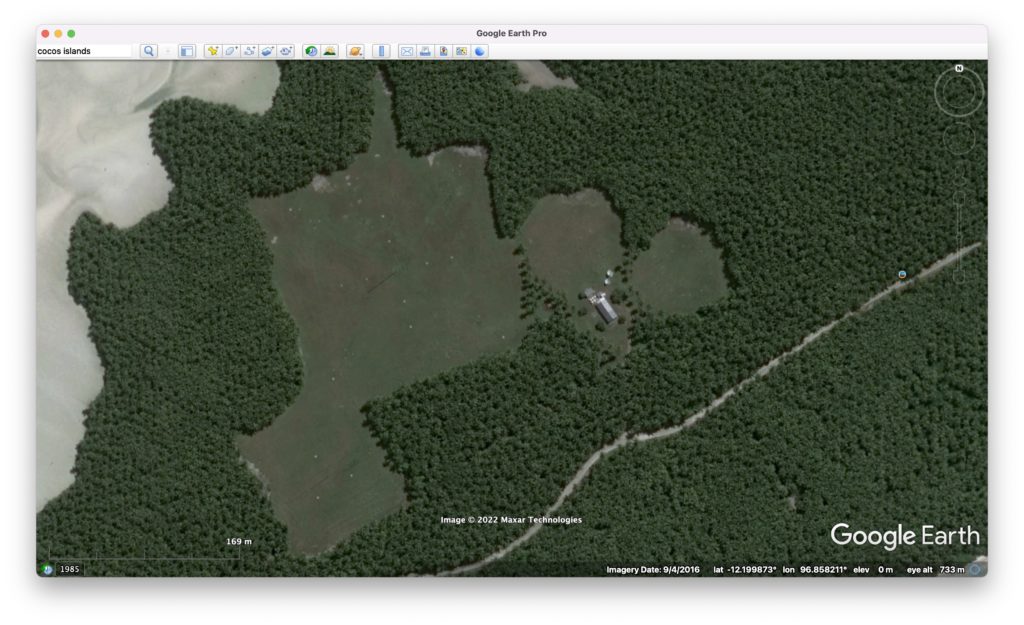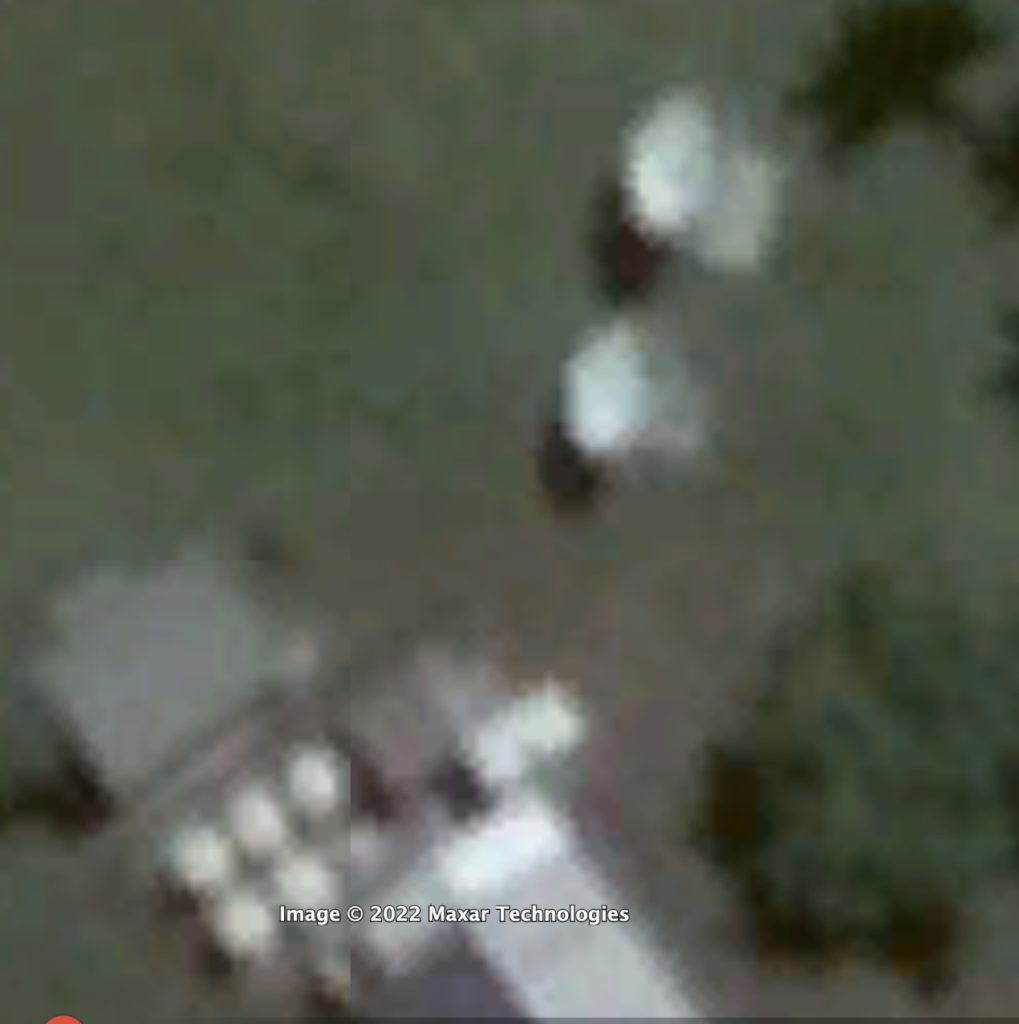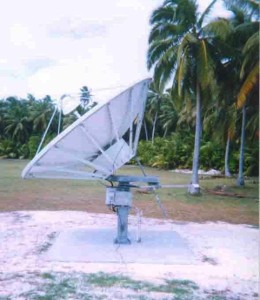Introduction
Latitude: –12.199302°, Longitude: 96.858687°
The Australian Signals Directorate maintains a signals interception and monitoring facility on the Cocos Islands, including a satellite ground station, and radio monitoring and direction-finding equipment. The facility is on the southeast part of West Island, on the road to Scout Park, at coordinates 12°11’57.95″S, 96°51’34.50″E.
The station has been expanded in recent years.
The most recently available Google Earth Imagery (2016) shows four cleared areas each with mast sets, including a 44m. diameter circularly disposed antenna array (CDAA) for (high frequency and very high frequency) radio direction finding on the eastern side.
In the face of what it described as “extremely challenging logistics”, the Adelaide-based company Australian Satellite Communication installed a communications satellite earth station at the facility for the Defence Department, and as of late 2012, also maintained the installation and trained local staff.
A second 4.5 m diameter satellite antenna was installed between 102 and 2015.
These terminals are located just north of the main building on the facility.
 Direction finding apparatus (CDAA) (right) and satellite ground terminals (centre) Australian Signals Directorate facility, West Island, Cocos Islands
Direction finding apparatus (CDAA) (right) and satellite ground terminals (centre) Australian Signals Directorate facility, West Island, Cocos Islands
According to Desmond Ball, this facility was in place at least as early as September 2001, and preparations for its establishment date back to the late 1980s. [1] The unit history of the RAAF’s 3 Telecommunications Unit (3TU) describes a deployment of 3TU members of 3TU to the Cocos Islands from 3 July to 6 September 1988 to test a new antenna there. [2] The former Administrator of the territory in the mid-1990s, Martin Mowbray confirmed that “two RAAF NCOs were based on Cocos and looked after the technical side of the Defence Signals (monitoring) equipment.” [3] According to Ball, the facility is remotely operated, most likely controlled from the ASD headquarters at Russel Hill in Canberra.
The station has never been publicly acknowledged by the Australian government, or previously reported in Australian or regional media. When the existence of the station was revealed the Defence Department maintained only that it hosts ”a communications station”. Fairfax Media quoted former intelligence officials as saying the station is used for maritime and military surveillance, especially Indonesian naval, air force and military communications. [4]
The Cocos Island listening station is likely to become much more important in coming years, as naval capacities and rivalries expand in the Indian Ocean – both with regional navies (India, Indonesia, Thailand, Malaysia, Australia) and those of the outside powers such as the United States and China. If the proposed Australian and United States deployments of P-maritime surveillance aircraft and Triton MQ-4C unmanned surveillance drones to an expanded Cocos islands airfield proceed, the ASD station will be important for monitoring both the responses of regional countries to those flights.

Ground station buildings and 4.5 m satellite antennas
(Google Earth, September 2016)
In conjunction with the Defence Department, the Bureau of Meteorology’s Ionospheric Prediction Service has operated an an ionospheric monitor on the Cocos Islands since 2006 to “improve space weather and radio predictions in the Indian Ocean area.” [5] This facility is part of a national and global network monitoring and predicting the effects of space weather in the sun-earth environment on the ionosphere and on satellite- and terrestrial radio communications – a matter of some importance to signals intelligence operations.
References
[1] Personal communication from Desmond Ball.
[2] ZKJ2: No. 3 Telecommunications Unit, 1946-1991, Melbourne: Staff Officer Publications, Headquarters Logistics Command, 1991, p. 31.
[3] Personal communication from Martin Mowbray.
[4] Listening post revealed on Cocos Islands, Philip Dorling, The Age, 1 November 2013
[5] Ionospheric Prediction Service, Annual Report 2006-07, p. 72.
Updated 10 November 2022
Project coordinator: Richard Tanter
rtanter@nautilus.org


